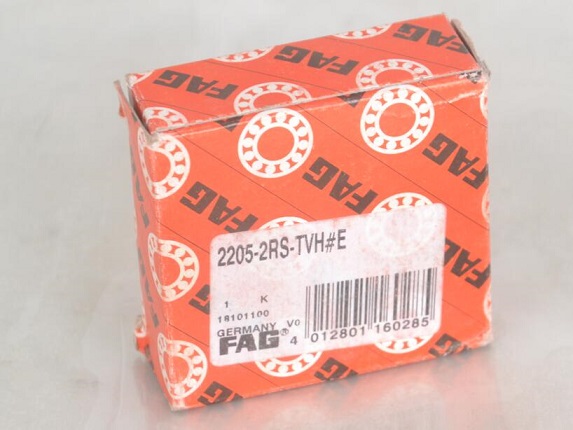Overview of FAG bearings
The German FAG Group was established in 1883 and is the world's first bearing manufacturer. Since 2001, FAG became part of the German Schaeffler Group and played positive and important roles in the group's aerospace, automotive and industrial fields. Combined with INA products, FAG has the most complete product outline in the rolling bearing industry. It covers production machinery, dynamic transmission and railway, heavy industry, and all applications in the consumer product industry. FAG bearings Main application areas: aviation engineering, metal cutting machine, steel processing equipment, converter, casting equipment, rolling mill, mechanical transmission equipment, paper machinery, cement machinery, mill, mine machinery, engineering machinery and vibration machinery, environmental equipment, wind power generation equipment, ship, antenna and radar, textile machinery, packaging machinery, etc.
Causes of the bearing failure
The bearing is one of the indispensable basic components of the operating machine. Although the rolling bearing is low, it is huge to the loss of the rolling bearing in the molten bearing.
With the rapid development of technology, companies have higher and higher requirements for rolling bearings. In particular, automation, continuous production, the requirements for rolling bearings are very demanding, so how to improve the reliability of rolling bearings has become one of the main problems that roll bearing manufacturers and use customers.
Analysis of the bearing failure
The reliability of the rolling bearing is closely related to the failure of the rolling bearing. To improve the reliability of the bearing, you must start from the failure of the bearing, carefully analyze the failure causes of rolling bearings, in order to identify specific measures to solve the failure.
(1) Surface oxide layer
The steel surface under the action of instantaneous high temperature interacts with the oxygen in the air to form a very thin (20 ~ 30nm) thin layer of iron oxide. It is worth noting that the thickness of the oxide layer corresponds to the test result of the total thickness of the surface-modified metamorphic layer. This shows that the thickness of the oxide layer is directly related to the grinding process and is an important symbol of the grinding quality. ERIC BEARING LTD supply enough stock for 6205-2RS FAG, pls click here :

(2) Amorphous structure layer
When the instantaneous high temperature in the grinding zone brings the surface of the workpiece to a molten state, the molten metal molecule flow is evenly coated on the working surface, and is cooled by the base metal at an extremely fast rate, forming an extremely thin layer of amorphous state Organization layer. It has high hardness and toughness, but it is only about 10nm, it is easy to be removed in precision grinding processing.
(3) High temperature tempering layer
The instantaneous high temperature in the grinding zone can make the surface heated to a temperature higher than the workpiece tempering heating within a certain depth (10 ~ 100nm). When the austenitizing temperature is not reached, as the temperature to be heated increases, the surface of the surface layer by layer will produce a tempering or high temperature tempering transformation corresponding to the heating temperature, and the hardness will also decrease. The higher the heating temperature.
(4) Two-layer quenching layer
When the instantaneous high temperature in the grinding zone heats the surface layer of the workpiece above the austenitizing temperature (Ac1), the austenitized structure of this layer is re-quenched into a martensite structure during the subsequent cooling process. For any workpiece with secondary quenching burn, the high temperature tempering layer with extremely low hardness must be below the secondary quenching layer.
(5) Grinding crack
The secondary quenching burn will change the stress of the surface layer of the workpiece. The secondary quenching zone is under compression, and the material in the high temperature tempering zone below it has the greatest tensile stress. This is where the crack core is most likely to occur. Cracks are most likely to propagate along the original austenite grain boundaries. Severe burns can cause cracks (mostly cracks) on the entire grinding surface and cause the workpiece to be scrapped.The higher the heating temperature.
Eric Bearing Limited, Your trustworthy bearing supplier. Eric Bearing Co., Ltd. has established partnerships with some distributors who have authorized world-renowned manufacturers. We provide Variety Top FAG Brand Bearings and we have more than 8 years of export experience can help you find the ideal purchasing solution. If you are looking for kind of bearings, please feel free to contact us.
Hot Tags: